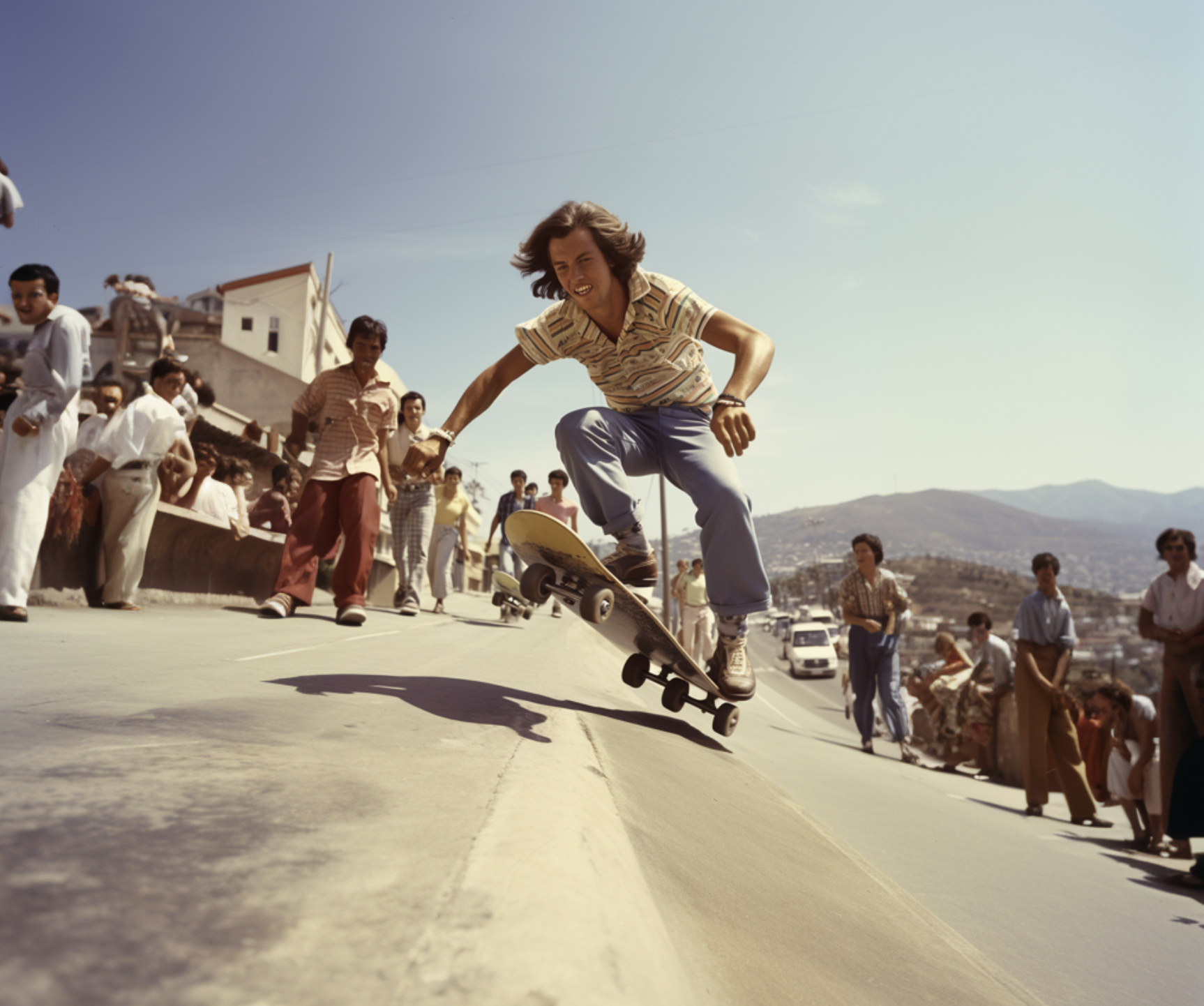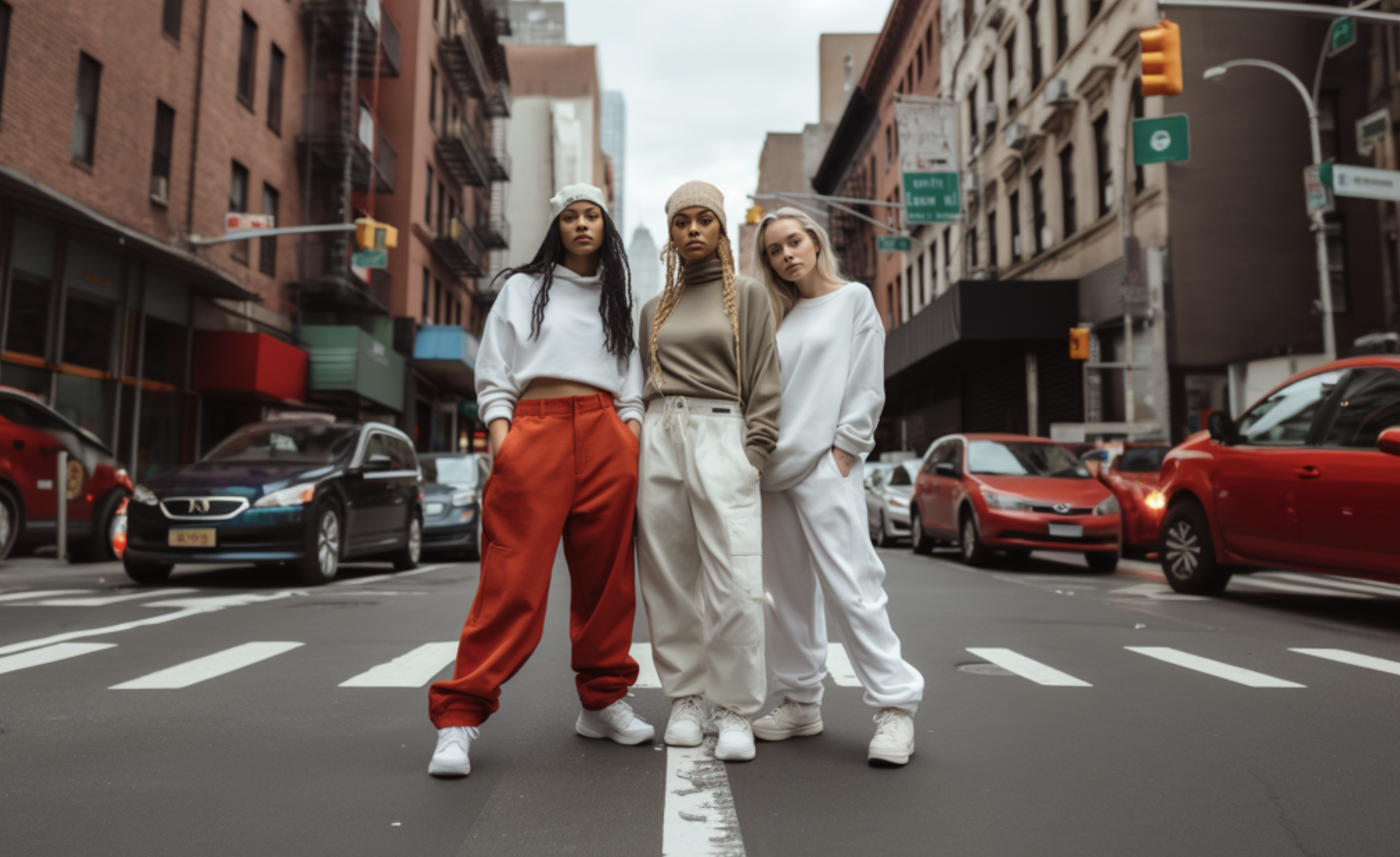Streetwear is a term that's become ubiquitous in today's fashion lexicon, but its origins and the cultural shifts that it has undergone over the years make it a fascinating subject.
Here's an exploration of the trajectory of streetwear, from its humble beginnings to its current global phenomenon status.
Origins in Surf and Skate Culture
Streetwear has its roots in the Californian surf and skate cultures of the 1970s and 1980s. Brands like Vision Street Wear and Stüssy emerged, embodying the laid-back vibes of the West Coast. Stüssy, in particular, started off selling handmade tees with distinctive logos, quickly becoming a staple among surfers.

Hip-Hop's Influence
As the 80s transitioned into the '90s, the growing hip-hop culture in New York began to adopt and adapt the streetwear trend. The genre's explosive popularity, intertwined with fashion, meant that artists were often the purveyors of style.
Brands like FUBU, Rocawear, and Sean John were founded by those within the hip-hop community, encapsulating the look and feel of the music and its urban roots.
Japanese Interpretation
Streetwear took on another life across the Pacific in the bustling metropolises of Tokyo. Brands like A Bathing Ape (BAPE) and UNDERCOVER were born, taking inspiration from both Western culture and Japan's unique aesthetic. The Japanese had a particular knack for meticulous quality and exclusivity, which would later become critical tenets of streetwear globally.
The Sneaker Craze
Arguably, no discussion about streetwear would be complete without mentioning the impact of sneakers. Brands like Nike, Adidas, and Reebok produced iconic designs that became must-haves.
The 2000s saw the rise of sneaker collecting, with limited releases and collaborations (like the Nike x Off-White partnership) driving up demand and value.

High Fashion and Streetwear
As streetwear's popularity grew, high-end fashion brands took note. The line between streetwear and luxury began to blur. Brands like Gucci, Louis Vuitton, and Balenciaga incorporated street aesthetics into their lines, while streetwear brands like Supreme collaborated with luxury houses.
The appointment of Virgil Abloh, the founder of Off-White, as the artistic director for Louis Vuitton's men's collection in 2018 was a symbolic acknowledgment of the intertwined destinies of streetwear and high fashion.
Digital Age and Hype Culture
The 2010s witnessed the birth of 'hypebeast' culture, a term originating from the eponymous blog. It describes someone obsessed with buying the latest and most hyped streetwear items.
With the rise of social media platforms like Instagram, showcasing one's fashion became easier, and obtaining the latest drop became a social currency.

The Future of Streetwear
As streetwear continues evolving, issues like sustainability and inclusivity have come to the forefront. Brands are now grappling with the environmental consequences of 'fast fashion' while also working to be more inclusive in their representation and sizing.
Moreover, as with all fashion trends, the pendulum is bound to swing. Minimalism, luxury basics, and other trends might pivot away from the bold logos and patterns that streetwear is known for. But if history is any indicator, streetwear, in whatever form, is here to stay.
Conclusion
Streetwear is more than just clothing. It's a reflection of cultural shifts, of music, of politics, and of personal expression.
From the beaches of California to the streets of Tokyo, it's a testament to how local trends can become global phenomena and how the lines between high fashion, culture, and the streets can beautifully blur.

